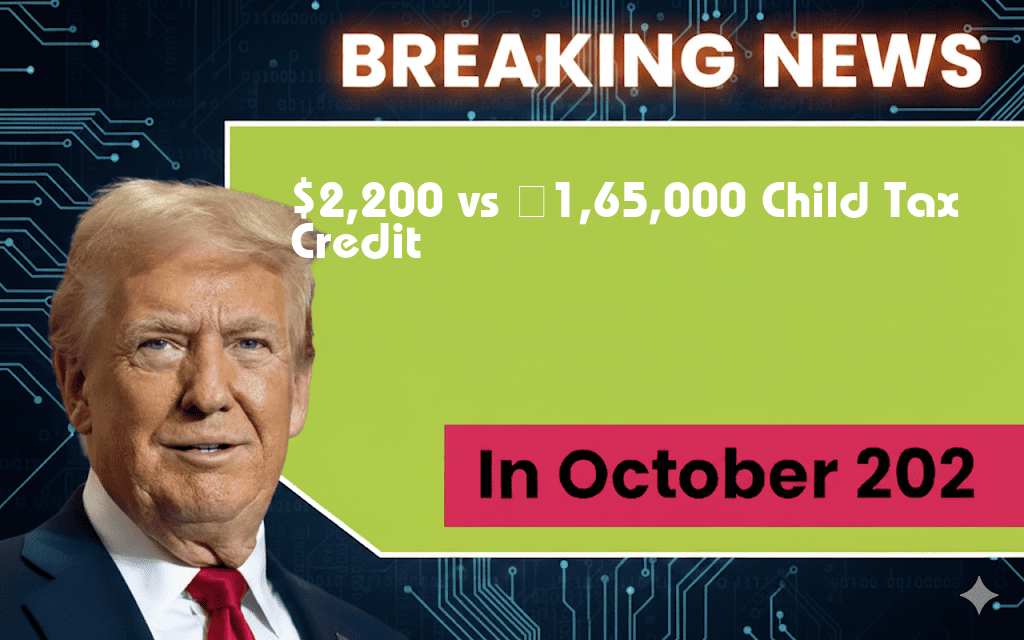The financial support offered to families can vary significantly across countries, influencing child welfare and economic stability. In the United States, the Child Tax Credit provides families with up to $2,200 per qualifying child, a measure aimed at alleviating poverty and promoting child development. Conversely, in India, the government has introduced a different approach, offering a child benefit scheme that amounts to ₹1,65,000 (approximately $2,000) per child. This article explores the implications of these financial aids, examining how they function within their respective economic landscapes, their impact on families, and their roles in addressing child poverty.
Understanding the Child Tax Credit in the United States
The Child Tax Credit in the U.S. aims to support low- to middle-income families by reducing their tax burden. Introduced in 1997, the program was significantly expanded under the American Rescue Plan Act of 2021, increasing the credit amount and eligibility. For the 2023 tax year, families can claim up to $2,200 for each dependent child under 17, which can be fully refundable. This means that even families with little or no taxable income can receive the full credit as a refund.
Eligibility and Benefits
- Available for families with children under 17 years old.
- Income limits apply; single filers earning up to $75,000 and joint filers up to $150,000 may qualify for the full credit.
- Designed to help offset the costs of raising children, including education, childcare, and other essentials.
Child Benefit Scheme in India
In India, the child benefit scheme offers families a substantial financial boost of ₹1,65,000 per child. This initiative is part of the government’s broader strategy to combat child malnutrition and enhance educational opportunities. Launched in 2020, this program aims to provide direct financial support to families, particularly those from economically disadvantaged backgrounds.
Eligibility and Benefits
- Primarily targeted at families below the poverty line.
- Encourages families to invest in their children’s health and education.
- Funds can be used for healthcare, nutrition, and schooling expenses.
Comparative Analysis of Support Programs
| Feature | U.S. Child Tax Credit | India Child Benefit Scheme |
|---|---|---|
| Maximum Benefit | $2,200 per child | ₹1,65,000 (approx. $2,000) per child |
| Refundability | Fully refundable | Non-refundable |
| Eligibility Criteria | Income limits; available for families with dependents | Primarily for families below the poverty line |
| Duration | Annual credit | One-time benefit |
Impact on Families and Children
The financial assistance provided by these programs plays a crucial role in improving the lives of families. In the U.S., the Child Tax Credit has been shown to reduce child poverty rates significantly. According to research from the Center on Budget and Policy Priorities, the expanded credit lifted millions of children out of poverty during its implementation.
In India, the child benefit scheme addresses critical issues such as malnutrition and access to education. The UNICEF reports that financial support can lead to improved nutritional outcomes and better school attendance, especially among vulnerable populations.
Conclusion
While both the U.S. and India offer financial support for families with children, the structures and implications of these programs reflect their respective social and economic contexts. The Child Tax Credit in the U.S. serves as a substantial annual benefit with a focus on tax relief, while India’s scheme provides a one-time support aimed at immediate needs. As countries continue to evolve their social safety nets, the effectiveness of these programs will remain a topic of significant discussion and analysis.
Frequently Asked Questions
What is the amount of the Child Tax Credit in the United States?
The Child Tax Credit in the United States is currently set at $2,200 per qualifying child, providing financial support to families with children under a certain age.
How does the Child Tax Credit in the U.S. compare to India’s benefits?
In India, the equivalent benefit is ₹1,65,000 for families, which is aimed at providing financial assistance for child upbringing. Comparing the two, it is important to consider the exchange rate and the purchasing power in each country.
Are there any eligibility requirements for the Child Tax Credit in the U.S.?
Yes, to qualify for the Child Tax Credit, families must meet specific income thresholds and the child must meet certain age and residency requirements.
What are the tax implications of the ₹1,65,000 benefit in India?
The ₹1,65,000 benefit in India is generally not taxable, but families should consult with a tax professional to understand how it fits into their overall tax situation.
How can families claim these benefits in their respective countries?
In the U.S., families can claim the Child Tax Credit when filing their income taxes, while in India, families can avail of the ₹1,65,000 benefit through government programs that may require registration or documentation.
